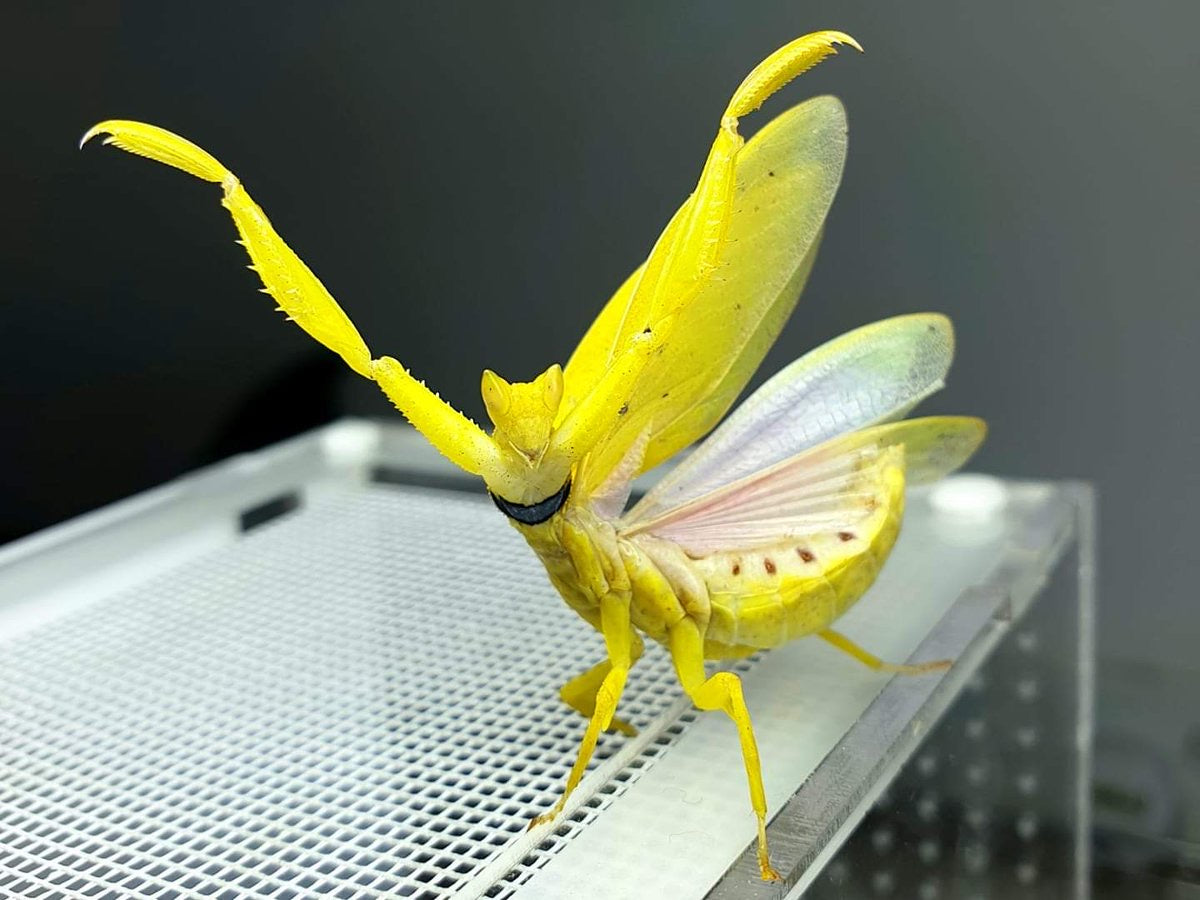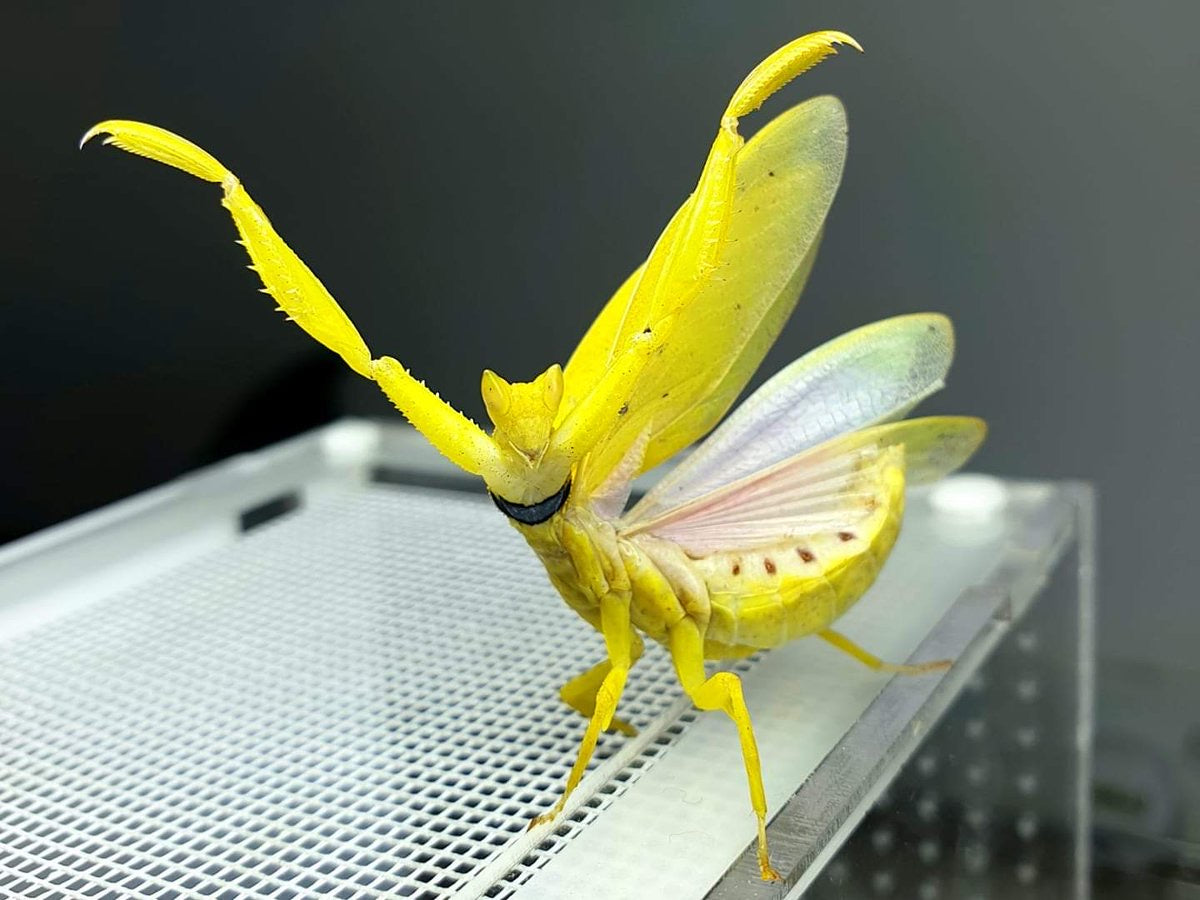
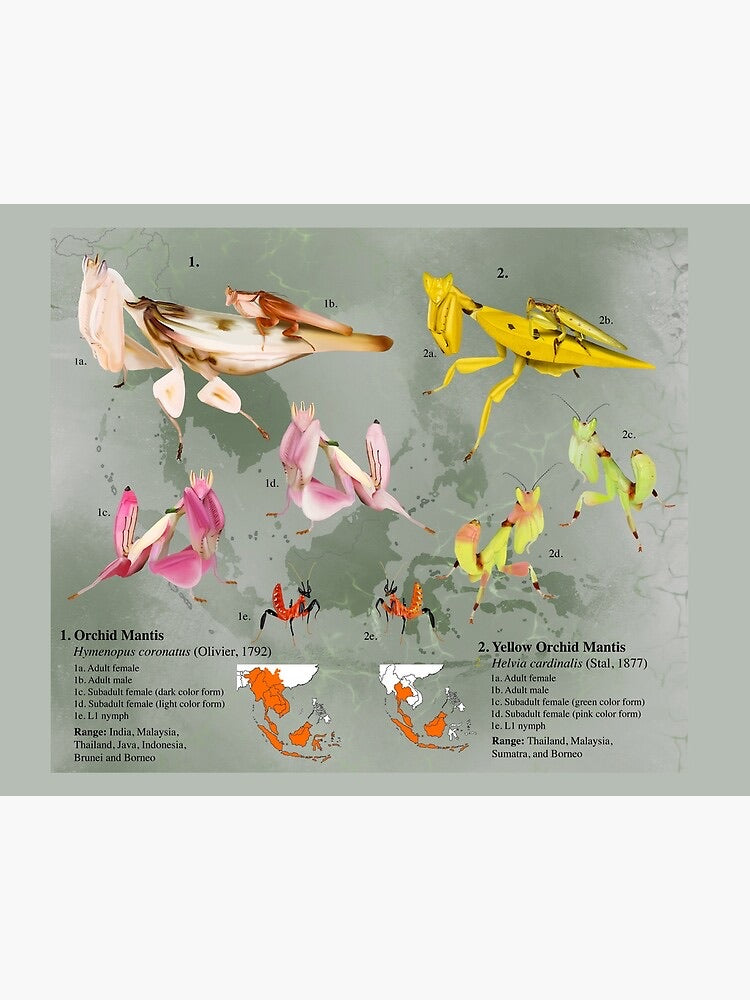
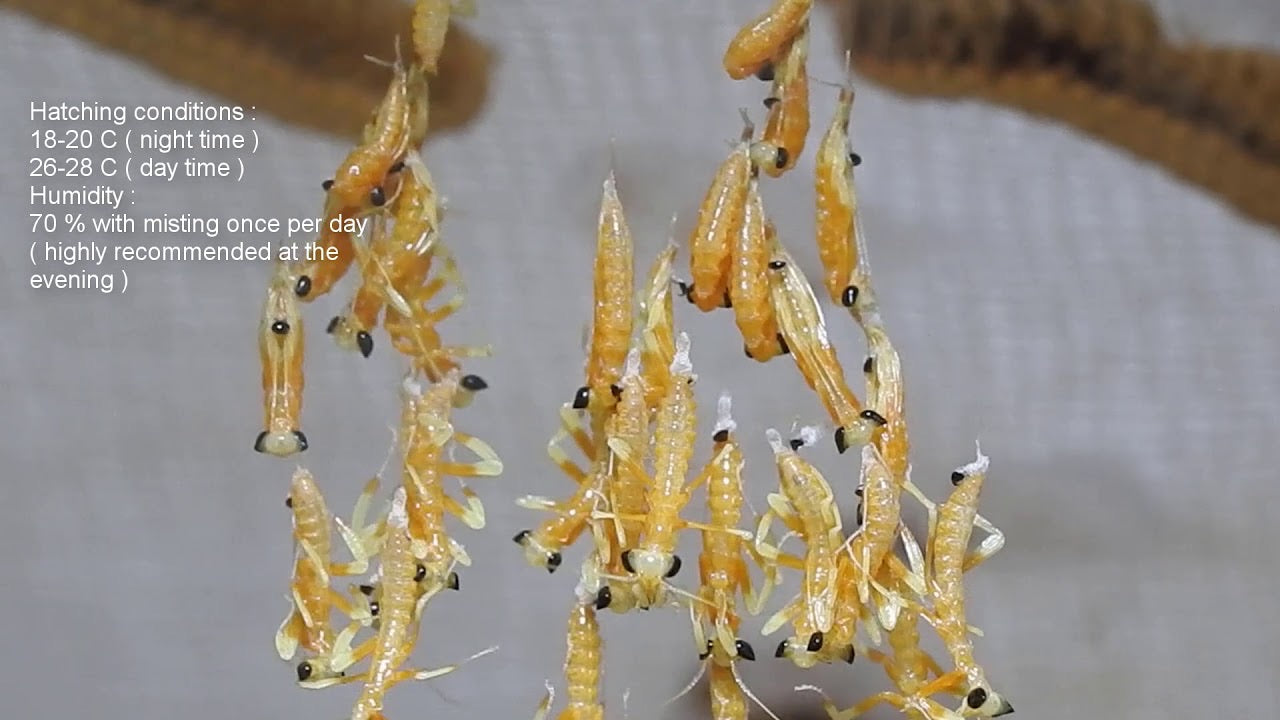
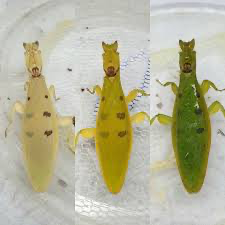
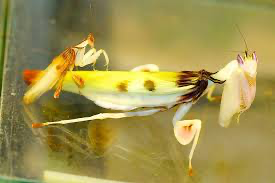
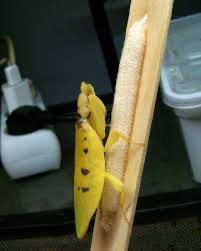
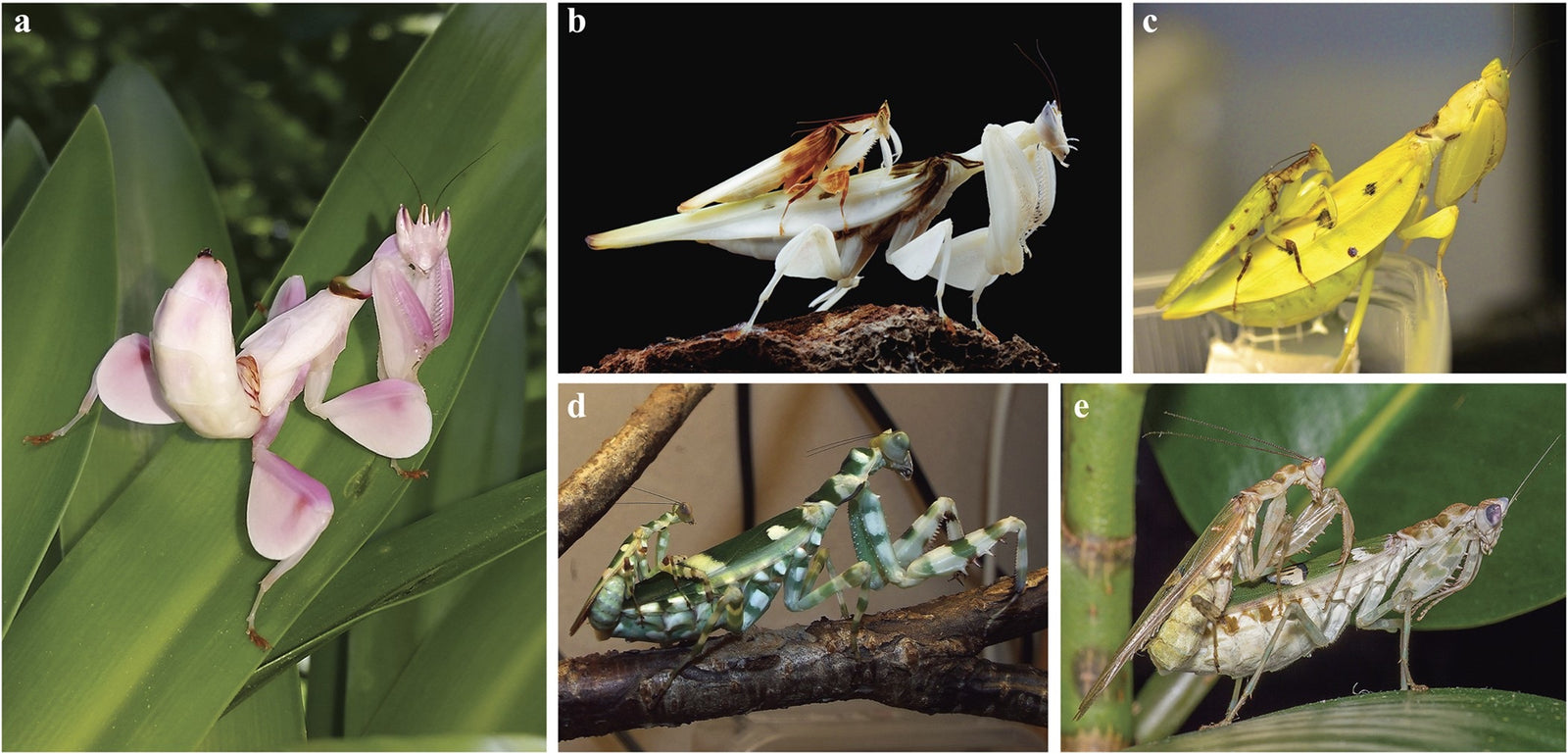
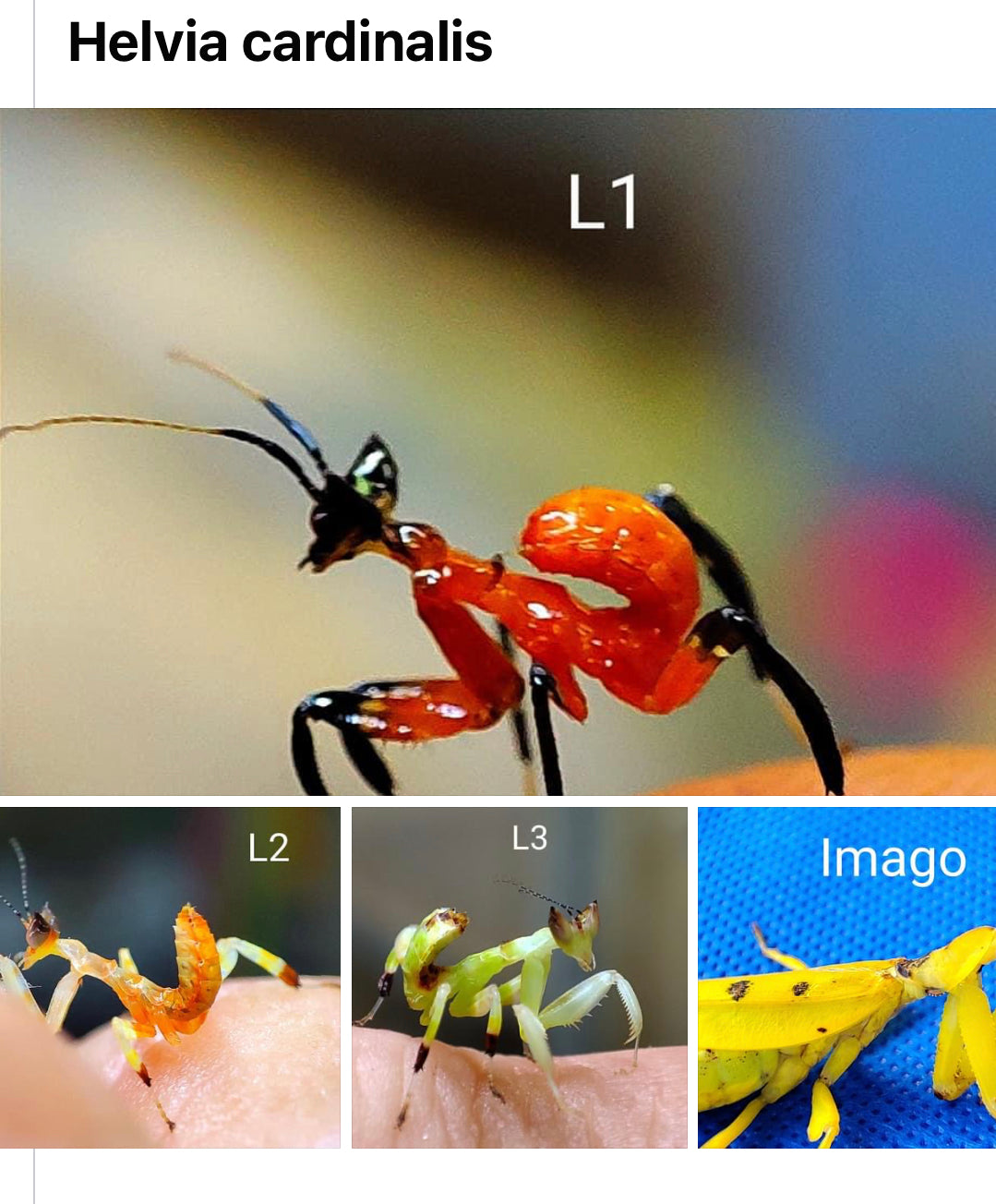
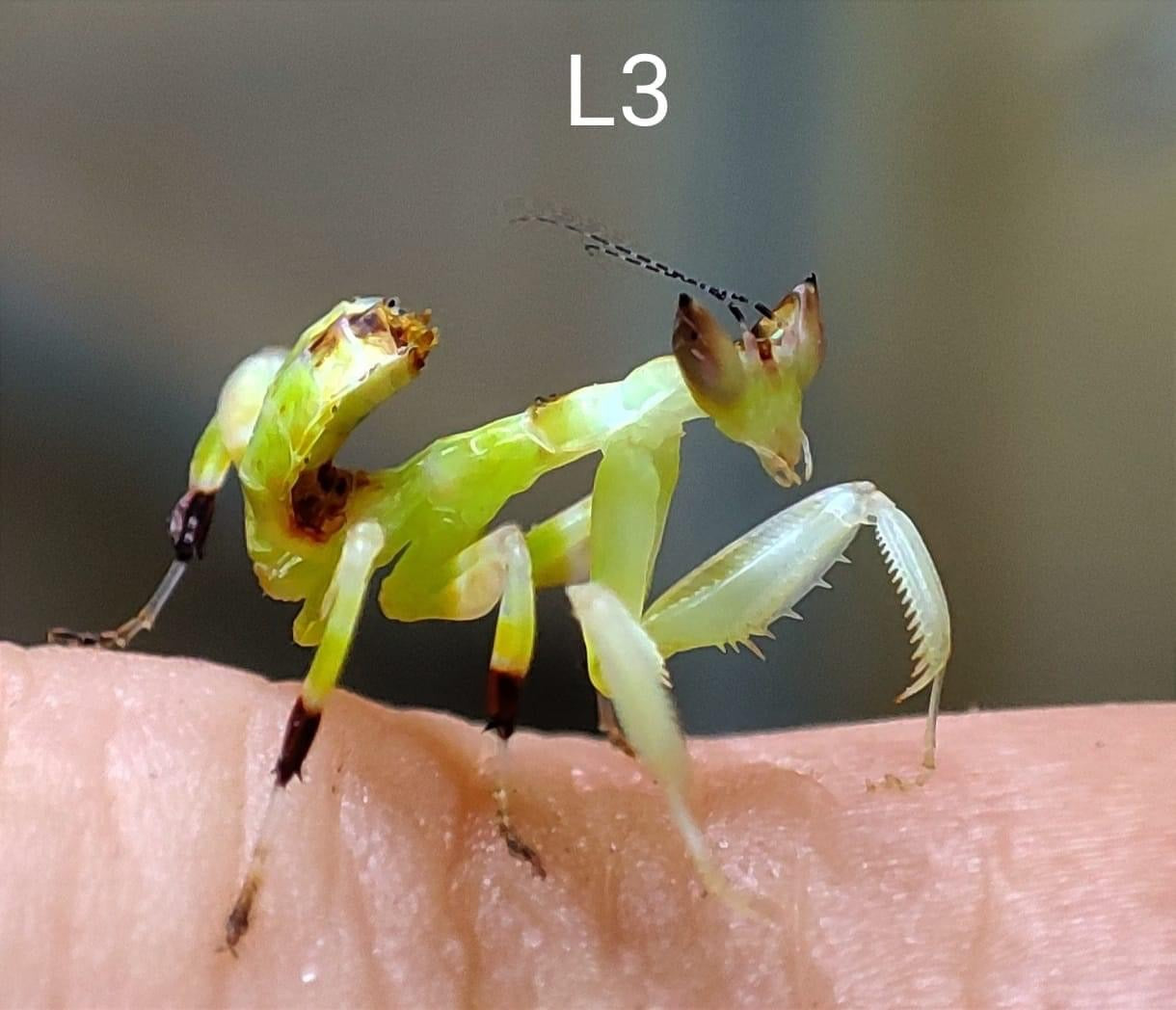
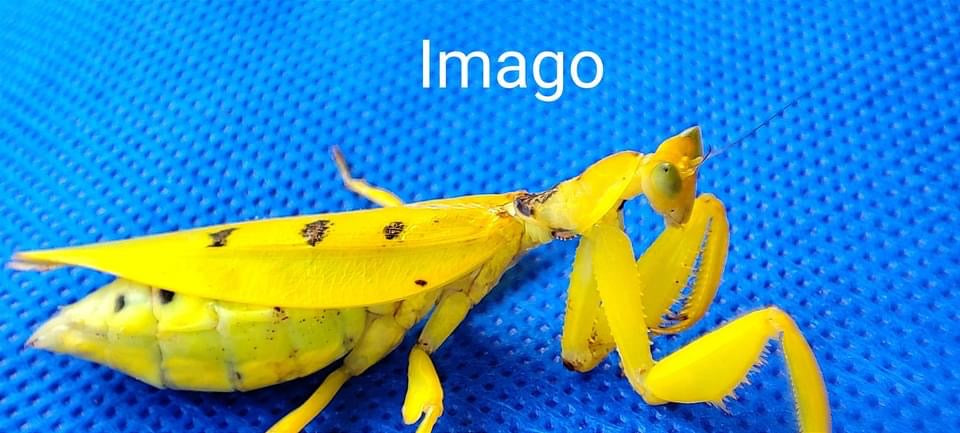
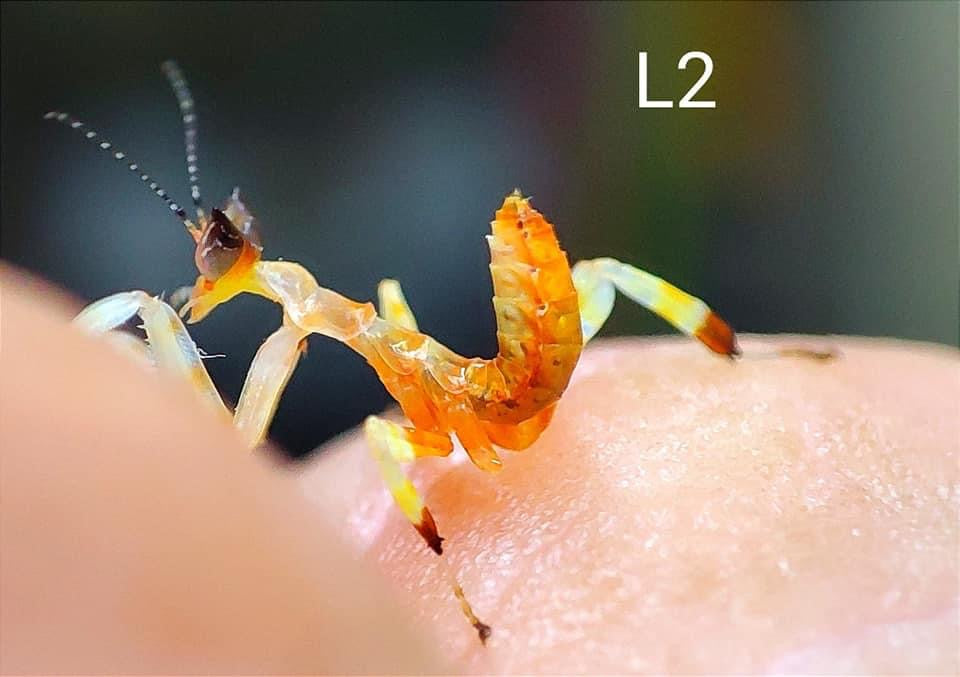
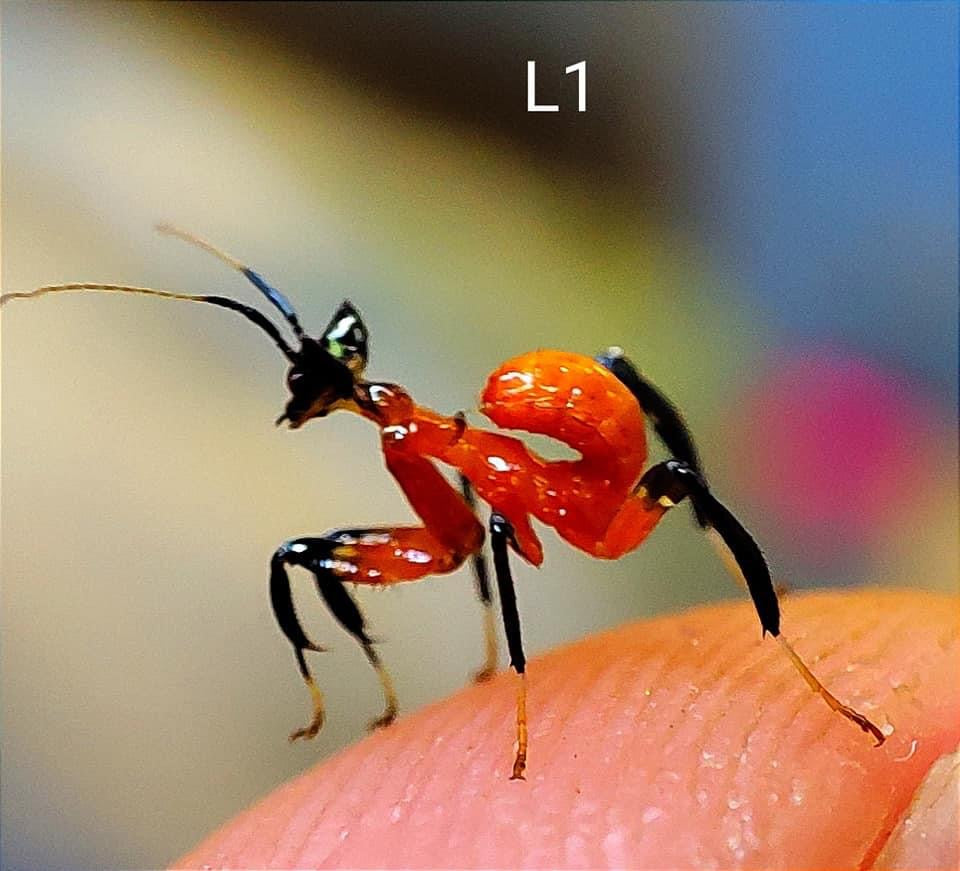
Sold out
Helvia cardinalis Yellow orchid flower mantis
$75.00 - $150.00
Helvia cardinalis orchid flower mantis. Rare new species! For sale
Orchid flower mantis (Hymenopus coronatus) and yellow orchid mantis (Helvia cardinalis, formerly Parymenopus davisoni) -This is a relatively new species in this hobby and especially rare in the USA. We are excited to offer these as they are a very beautiful and rare species.
Care: The ideal temperature for this Mantis is about 28 ° C, but you can vary the temperature between 25 ° and 35 ° C. At night the temperature should be at least 18 ° C. If you want to mate a male and a female that where born at the same time, you need to slow down the development of the male. These males should be constantly kept at 18 ° C.
This species needs a relatively high humidity. Approximately 60 to 80% RH. The nymphs are better kept drier, they are very sensitive to a humid environment. You can mist the nymphs about 1x per week, also depending on the ventilation you have in their enclosure. As the nymphs get older, you can gradually increase the air humidity by spraying more often.
As with all types praying mantids, this species needs an enclosure that is at least 3 times the length of the mantis in height, and at least 2x the length of the mantis width. For an adult female this means is at least 24 cm in height and 16 cm in width. A nice size for a terrarium would be 30 x 20 x 20 cm (HxWxL), so there is room for many artificial flowers and perches.
Because this species lives on flowers, it eats mainly flying insects in nature. It is advisable to also offer them flying insects in captivity. Wild butterflies and hoverflies can be given in addition to a diet of Fruit flies, and houseflies / blue bottle flies
Breeding:
The females of this species are much larger than the males. It is therefore very important that the males and females are identified in time, so you can make adjustments to their developmental time. If you want to mate males and females that were born around the same time, you need to slow down the development of the males. If you do not, then the males have already died of old age while the females are not yet mature. You can determine the sex of a mantis by counting the segments on the abdomen, as described here.
Once you know what the males and the females, you should start treating them differently. The females must grow much more, to reach their large adult size, so they should eat as much as they want every day. The temperature may be very high for them, around 35 ° C. Males have to be inhibited in their growth. Give them small prey, and a lot less than the females. They should also be kept much cooler than the females, at about 18 ° C to 20 ° C. Much lower temperatures cause health problems, so it is best to inhibit the growth primarily by food. Of course, you do not want to starve your males, so keep a good eye on their body condition.
If you see that the females are almost adults, you can start to treat the males the same as the females. The females live much longer than males, so it is not a problem at all to have the female mature before the male. If you do not plan to breed the species you can keep males and females just the same all the time.
Approximately 2 to 4 weeks after the last molt, a mating attempt could be made. Make sure the female has eaten very well before you introduce the male. Usually the female is very hungry and can eat the male in an instance. It is certainly advisable that the female has something to eat when the male is introduced. She is occupied with having dinner so the male can approach her relatively safe. Mating may take several hours to even a few days. As long as everything looks good you can leave the male on her back for as long as he wants. When he leaves her back, remove him from the enclosure to make sure he is not eaten.
In the past, there were some taxonomic difficulties with this species. In 1877, the Swedish entomologist Carl Stål described the newfound species as Helvia cardinalis. Howewer, he used a single male specimen for the description. Thirteen years later in 1890, the English zoologist James Wood-Mason also described what he believed to be a new species that got the term Parymenopus davisoni. Wood-Mason also used only one individual for the description, in this case, a female. Little did he know, that he was describing a species that was already discovered. For over a century, these were believed to be two different species. In 2005, the german entomologist Christian J. Schwarz discovered the fact, that these two species are actually just one. Since then, the Yellow flower mantis has the correct scientific term Helvia cardinalis and the former term Parymenopus davisoni became a synonym, although it is still today more frequently used than the actual term.

